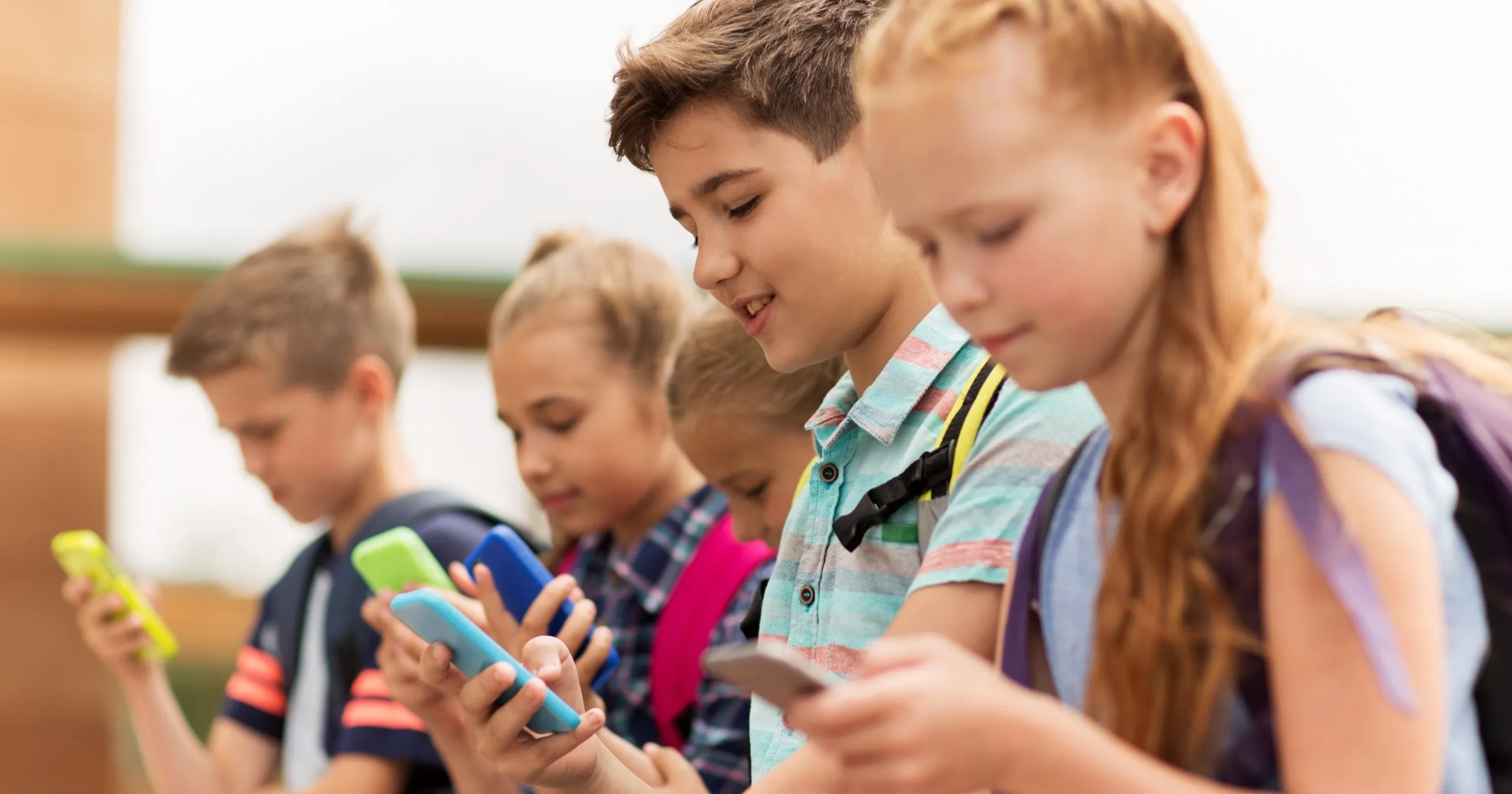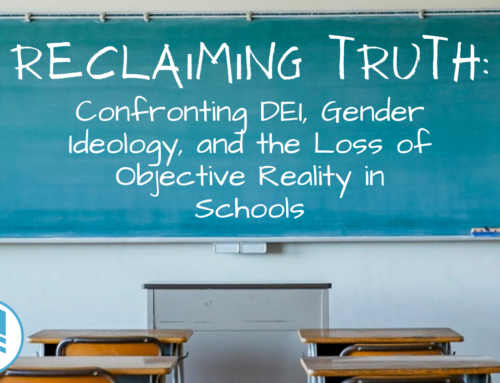
Have you ever told your child “Go play outside” or “Read a book” when they tell you they’re bored? Chances are, sometimes—maybe even every time—those suggestions are met with less-than-enthusiastic agreement.
It turns out that your kids would rather play video games or be entertained by some other form of digital media. And how do you know? They tell you with emotionally charged behavior, which is a reasonable cause for parental concern.
For most members of the twenty-first century, the primary reason for this emotional response (and the source of so-called boredom) is digital withdrawal. Digital addiction has molded young brains through hyperstimulation to the point that they’re becoming emotionally numb.
How does this happen and what should parents do about it?
This week, Noah Webster Educational Foundation interviewed Brad Huddleston—an internationally respected speaker, consultant, teacher, and author—to speak on the integrated issues of technology and culture.
As part of the world of computer programming, Huddleston believes in learning how to use technology properly and healthfully. But to do that, we have to be aware of how it is often improperly used so we can avoid the severe consequences.
The “Seamless Backbone of Life”
Technology has burgeoned its way into the cracks of ordinary life over the last few decades. “At first, the pre-digital age evolved slowly. Products became digitized. Photos became bits. Knowledge moved from encyclopedias to Wikipedia. The phone book became an online directory. Printed magazines became websites,” says TechCrunch in their article “The three ages of digital.”
Technology’s evolution has resulted in the post-digital age, in which “digital technology will be a vast, quiet element forming the seamless backbone of life. The internet will be a background utility, noticeable only in its absence.”
The World of Digital Natives
Kids born from 1996 to the present (Generations Z and Alpha) are known as “digital natives.” Technology is the spine of their everyday life. And interestingly enough, “their brains, literally through neuroplasticity, are wired very, very differently from ours—from our generation.” says Huddleston. “We are what are called Digital Immigrants. So we immigrated into this movement.”
However, there are a few exceptions to that generational distinction—and Huddleston is one of them. While he was in high school, he got involved in computer programming and later went on to achieve a computer science degree. He is part of the digital immigrant generation, but he was involved in technology at a young enough age to be considered a digital native.
“[And that’s] where I think I can be helpful to people. Even at my age (I’m 57), I am also a digital native….So I’ve had one foot in that world since I was very young. So I get both worlds.”
Left to Their Own Devices
Modern technological advances have had an epic and irreversible impact on the realms of healthcare, science, communication, and business. In all of these areas, technology is a necessity—responsible for basic functions and societal relevance.
The impact of technology hasn’t skipped the realm of education. For some time, experts have been studying the effects of using digital technology in education and its potential for better or worse.
The recent pandemic has opened more eyes, however, to the consequences of relying on digital means to solve educational problems. Parents across the nation have watched their child’s grades go down during the recent upsurge in online study.
Huddleston explains part of the reason for this decline: “[Many] parents assumed [that they could] put the child down in front of Zoom or Google Classroom…and they could walk away and the child would just do their work. There are a whole lot of brain issues connected to that.
“[A child’s] prefrontal cortex is not fully developed [and] that’s where you can ‘put the brakes on,’ as it were. You can police your own behavior. That’s only partially developed in a child; that’s why they need a teacher to correct that.”
When children are left to their own digital devices in this context, typically they’ll end up consuming online media for entertainment’s sake instead of doing their school work.
This problem then causes another problem. “When you put a child in front of a screen, even educational software…you’re hyperstimulating that child’s brain. Meaning it’s too much for them,” says Huddleston.
Children’s brains aren’t strong enough to consistently handle overstimulation without damage. When a child’s brain is exposed to overstimulation, it will “[go] on to overload with a neurotransmitter called dopamine. And habituation can happen very quickly.”
Habituation here refers to the beginnings of an addiction.
Addiction And The Brain
“[And] addiction is addiction. It works with chocolate, alcohol, cocaine, you name it. But it also works with technology in the exact same area of the brain. [However], the side effects are a little bit different.”
Addiction always causes some kind of deterioration. Just as the liver of an alcoholic or the lungs of a smoker will deteriorate, digital addiction causes emotional deterioration. “The irony is [that] the more we stimulate the brain, over time it starts to shut down and we start to lose emotional feeling,” says Huddleston.
How does that happen? Inside the brain, there is an area called the nucleus accumbens, or the “pleasure center” of the brain. This area lights up when anyone engages in a pleasurable or stimulating activity. Then, dopamine is released via neurotransmitters. That’s what makes you feel good. And usually “feel good” stuff invites us to do more so we keep feeling good, right?
But that repetitive stimulation—and in this case overstimulation for children—doesn’t lead to more good feelings.
When the brain is constantly overstimulated, it will “build up resistance or tolerance. You’re habituating to it so it’s fighting back, trying to push out all that extra dopamine…”
That tolerance will build a “wall” between the stimulating activity, nucleus accumbens, and the person’s ability to feel pleasure from that activity.
“[And as the wall grows] over time it becomes harder to feel… And we don’t like to be cut off from those feel-good feelings, and so we do more and more of that activity… And the brain keeps fighting us back by building that barrier so we just have to do the activity longer, harder, and more intensely to saturate the wall to spill over so that we end up getting our ‘fix.’”
Becoming Emotionally Numb
“If they’ve got a wall, they have anxiety if they’re not constantly penetrating that barrier.”
Remember when I asked if you’ve ever told your child to “go play outside” or “read a book” when they tell you they’re bored?
…And you get a typical, disagreeable response? Perhaps even a tantrum?
Huddleston’s insight sheds some light on this common situation: For kids who are digitally addicted, the amount of dopamine they get from activities like going outside (which is a normal, healthy amount) is not going to be big enough to penetrate the barrier that’s been building in their brain. “[And] that’s where the anxiety and the anger is coming from.” They’re going through withdrawal.
Obviously, all children can have strong emotions. That’s to be expected. But the point here is that “once addiction sets in, it exacerbates things.” If a child is already inclined towards certain strong emotions, they are susceptible to greater instability. Because the first signs of digital addiction show up in a child’s emotional behavior.
But things could get much worse.
If you were to watch a brain scan of an emotionally healthy, unaddicted person’s nucleus accumbens, you would see it light up when stimulated. But for someone who is addicted, “it stops lighting up, which means the activity has shut down and the person becomes emotionally numb.”
Good News! There’s a Cure
It is in the interest of parents to reclaim how their children interact with technology. The soft soil of a child’s formative years must be healthily cultivated by good habits and activities. The rest of their life depends on it.
“Their emotions have to be in a certain atmosphere. [Because] their cognition will depend on their emotions.” as Huddleston puts it.
Throughout this interview, Huddleston shared some scans of brains that were affected by different addictions: marijuana, meth, porn, and digital. Each slide showed the impact on brain activity compared to the activity of a healthy brain. Turns out that “brain imaging shows that digital addicts’ brains look like cocaine addicts’ brains.” How tragic is that?
But, there is good news!
Digital addiction can be reversed if you catch it early!
Parents are the Cure
Huddleston has talked to thousands of people at schools, conferences, and meetings. When it comes to discussing how to reverse the damaging effects of digital addiction in children, he likes to talk to parents first.
“I cherish the parent meetings, because they’re the ones with the problem…and the reality is the parents are just as addicted as the children… And if they don’t model [healthy habits] to their children, the children are just going to follow suit.”
But Huddleston wants to help you! He has written a couple of books that can help you restore a healthy relationship to technology. Check out: Digital Cocaine: a Journey Toward iBalance & The Dark Side of Technology: Restoring Balance in the Digital Age to help you navigate how digital addiction works and find freedom!
What’s best for children?
Parents must carefully monitor their children’s use of technology and closely observe their emotional behavior for signs of addiction.
When it comes to using technology for educational purposes, Huddleston suggests that parents create an environment of 80% analog and 20% digital tools. He also points out that a child’s brain does not “mature enough to have some resilience [against addiction]…[until] between 12 and 14 years of age.”
For kids who are addicted, parents must be bold enough to actually take away the child’s object of addiction. Parents cannot just limit their addicted child’s exposure to screens. Why? Well, as Huddleston puts it: “I’m going to give you two lines of cocaine instead of three.”
Limits don’t make progress in this area.
Parents have to take away the screens for reversal to be possible. After children undergo several weeks of detox, they can break their addiction! If you take away the source of their addiction, you must fill up a child’s life with real, physical relationships: good storybooks, getting outside and playing hard in nature, and stimulating educational material.
In Conclusion
You and your family can develop a digitally healthy lifestyle and the Noah Webster Educational Foundation wants to help! Click here to watch the full interview with Brad Huddleston—where he shares more on the subject of digital health, including:
- Brain scans and scientific data relating to digital addiction
- Artificial intelligence and phases 1.0 & 2.0
- The impact of physical engagement vs. virtual engagement
- Learning how to integrate the analog and tech worlds
- Other side effects of digital consumption for children
- The consequences of sleep loss amongst kids & teens
- Attention Deficit Disorders and over-medication
- Apple installing screen time tracking methods on phones
- Unprecedented hours of screentime in kids and teens
- Children who’ve had tech withheld until they’re older
- Using technology properly
Do the signs of addiction in this post sound familiar? To get more help from Brad Huddleston, go to his website bradhuddleston.com to order his books or schedule him to speak at an event.





[…] Jason adds that boredom is related to the “transition from the tactile and creative [learning] to the cerebral and regimented….In third grade I cut with scissors, smeared glue sticks, and doodled with scented magic markers. By 12th grade I was plugging in formulas on a TI-83 and writing the answers on fill-in-the-blank worksheets. And research papers stimulate and beget rewards at a thousandth the speed of Snapchat and Instagram.” (Ah! The 21st century enemy of mental focus.) […]